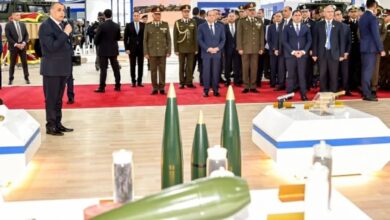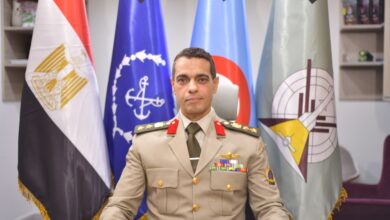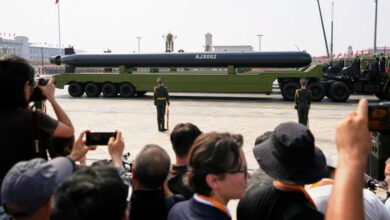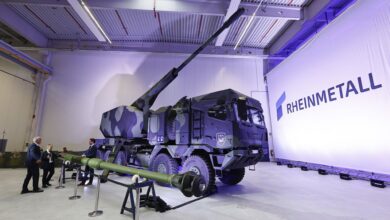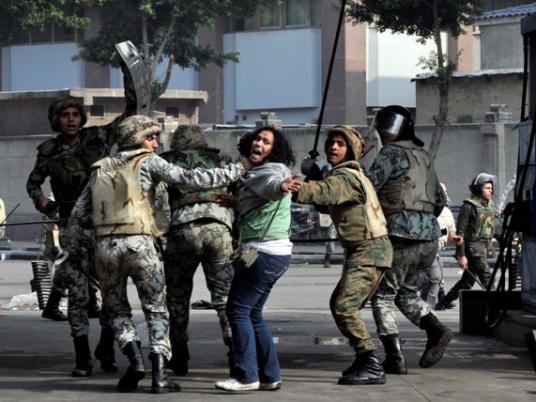
During the 18-day uprising that drove former President Hosni Mubarak from power, the military was praised for allegedly refusing orders to shoot protesters. But since the Supreme Council of the Armed Forces took power on 11 February, military forces have killed more than 50 people, including 10 in the latest round of violence which began on 16 December.
Egypt’s military rulers say that the people they targeted were not the true revolutionaries of Tahrir Square, an argument that plays on preconceptions that those dressed in shabby clothes do not belong to the neat, professional middle-class “Facebook youth” who brought about the revolution. A quick glance at those killed dispels this classist myth, however. On Friday, Emad Effat, an Al-Azhar sheikh, was shot dead. So was Alaa Abdel Hadi, a medical student at Ain Shams University.
The martyrs at the hands of the army include the poor and middle-class, professionals and unemployed, religious and secular, Christian and Muslim.
It wasn’t until April that the military became directly implicated in the murder of protesters, but the army’s legacy of violence goes back to its first days in power. But even in other incidents where scores were killed by Ministry of Interior forces, the army’s soldiers have stood by and watched. During the notorious Battle of the Camel, in which plain-clothed pro-Mubarak thugs attacked protesters in Tahrir Square, the army refused to intervene.
What follows is a partial timeline of the military’s brutality towards protesters. It focuses largely on Tahrir Square and downtown Cairo. No figures are calculated for other areas or governorates.
February
Two days before Mubarak resigned, the British newspaper The Guardian published a story challenging claims that the military remained neutral during the anti-Mubarak protests.
The Guardian spoke with activists who were detained by the army. According to the paper, they said they “suffered extensive beatings and other abuses at the hands of the military in what appears to be an organized campaign of intimidation.”
The same accusations were documented by the international human rights watchdog Amnesty International, which said on 17 February that “members of the armed forces used beatings, whipping and other forms of torture and other ill-treatment to intimidate protestors and to obtain information about plans for the protests.”
6 March
Military police violently dispersed protesters who laid siege to State Security and Investigations Service offices in central Cairo. Military police used batons and electric batons to disperse and arrest protesters. No causalities were reported.
9 March
The army violently cleared Tahrir Square, arresting scores. Dozens were moved to the Egyptian Museum on the north side of the square, where they were beaten and electrocuted. At least 17 women detained were subjected to humiliating “virginity tests” at the hands of military officials. A general defended the practice, telling CNN, "The girls who were detained were not like your daughter or mine. These were girls who had camped out in tents with male protesters."
Human rights groups decried the “tests” as sexual assault and torture.
9 April
On 8 April, revolutionary groups held a massive protest in Tahrir Square calling for Mubarak regime figures, including the former president, to face prosecution. Hundreds stayed late, and in the early hours of the following morning, the military police stormed the square with the help of Central Security Forces, using gunfire to disperse the crowd and beating those who remained. At least two people were killed with live ammunition.
23 July
Civilians attacked an anti-SCAF march heading toward the Ministry of Defense in Abbasseya. Mohamed Mohsen, a 23-years-old activist from Aswan, was struck in the head with a rock and killed. While it was civilians, mostly residents of Abbasseya, who attacked the protesters, the military helped set a trap by blocking the road ahead of them. Meanwhile, SCAF spokesperson Hassan Roweiny appeared on television and accused the April 6 Youth Movement of receiving foreign funding for “divisive aims.” Many viewed this as incitement against the protesters.
1 August
The first day of August coincided with the first day of the holy month of Ramadan. It also coincided with yet another brutal crackdown on protesters in Tahrir Square. Military police once again stormed the square, beat scores of people with their batons, and tore down protesters’ tents before setting them on fire. Scores of protesters were arrested and some journalists were beaten.
9 October
In the most significant act of army brutality since February, the army attacked a peaceful march against religious discrimination. Most of the marchers were Coptic Christians. The army used live gunfire and ran over a number of protesters with armored personnel carriers. Some protesters threw rocks at the army. Twenty-eight people, including one soldier, were killed in one of the most deadly attacks against Copts in years.
11 November
Residents of Damietta Governorate, located on Egypt’s north coast, held a protest against a fertilizer factory that they say pollutes the local water supply. The army tried to disperse protesters who were blocking a main road to the port. They fired live ammunition, which killed Islam Amin Abu Abdallah, a 21-year-old protester. Later, the army withdrew from the site.
19 November
In Tahrir Square, the day after a large protest was dominated by Islamist groups who opposed a document that would enshrine the military’s power in the coming constitution, the military and Central Security Forces attacked a small sit-in. The violent dispersal left two people dead, but also sparked five days of clashes between protesters and Ministry of Interior forces. More than 40 people were killed and some 1500 wounded.
16 December
Tahrir protesters remaining from the November clashes moved to the nearby cabinet building and launched a three-week sit-in. On 16 December, military police attempted to forcefully break up the gathering. They were met with resistance from protesters, who responded by throwing rocks. Uniformed members of the army stood on the roofs of buildings nearby and hurled rocks. As the standoff continued, protesters and army forces exchanged Molotov cocktails, rocks, and, at one point, fireworks. When military police captured protesters — including women — they beat them with batons, kicked them, and stomped on their bodies. At least one female protester was stripped while being beaten in the street.
The fighting continues at the time of writing and Central Security Forces have joined the ongoing struggle.

